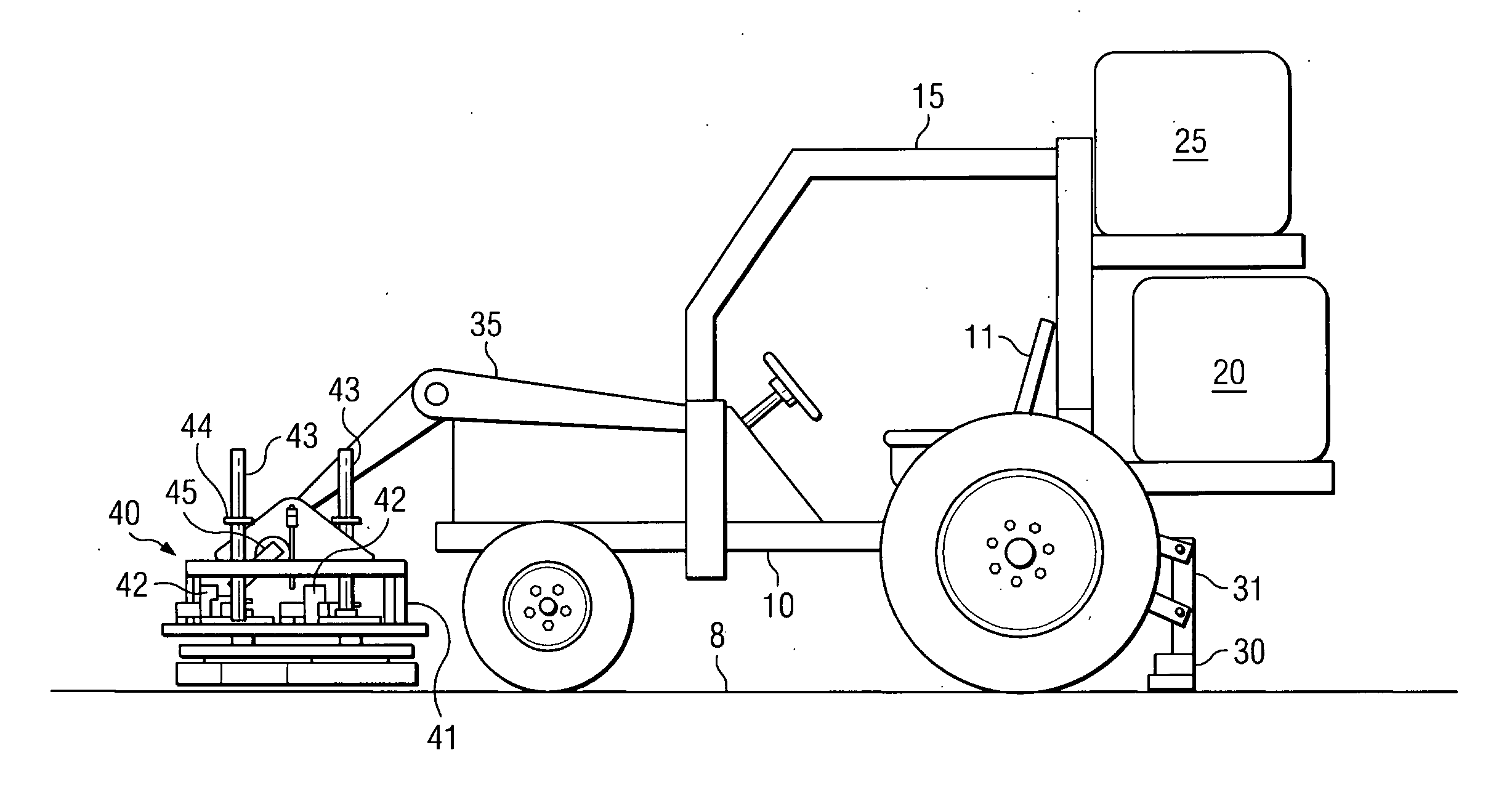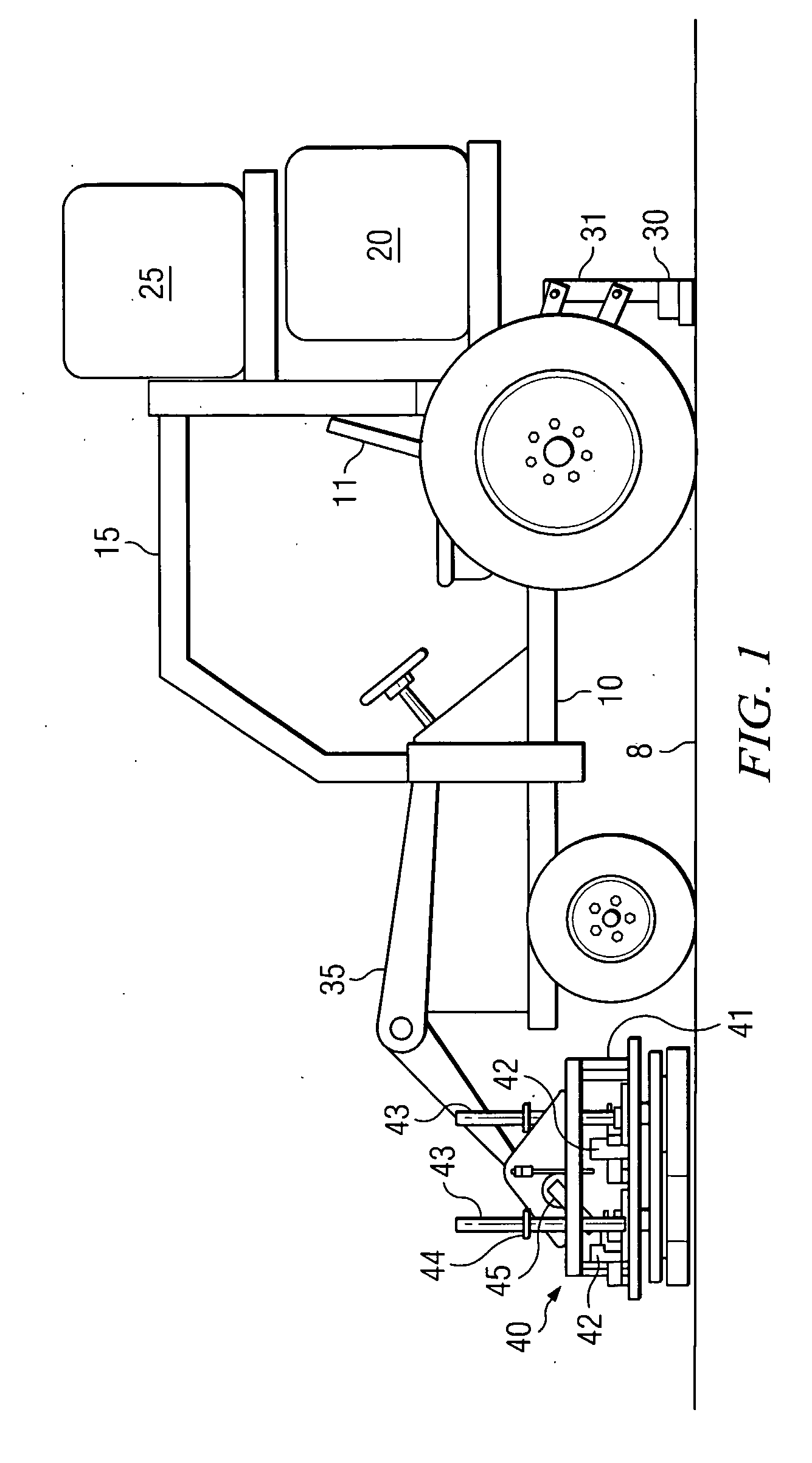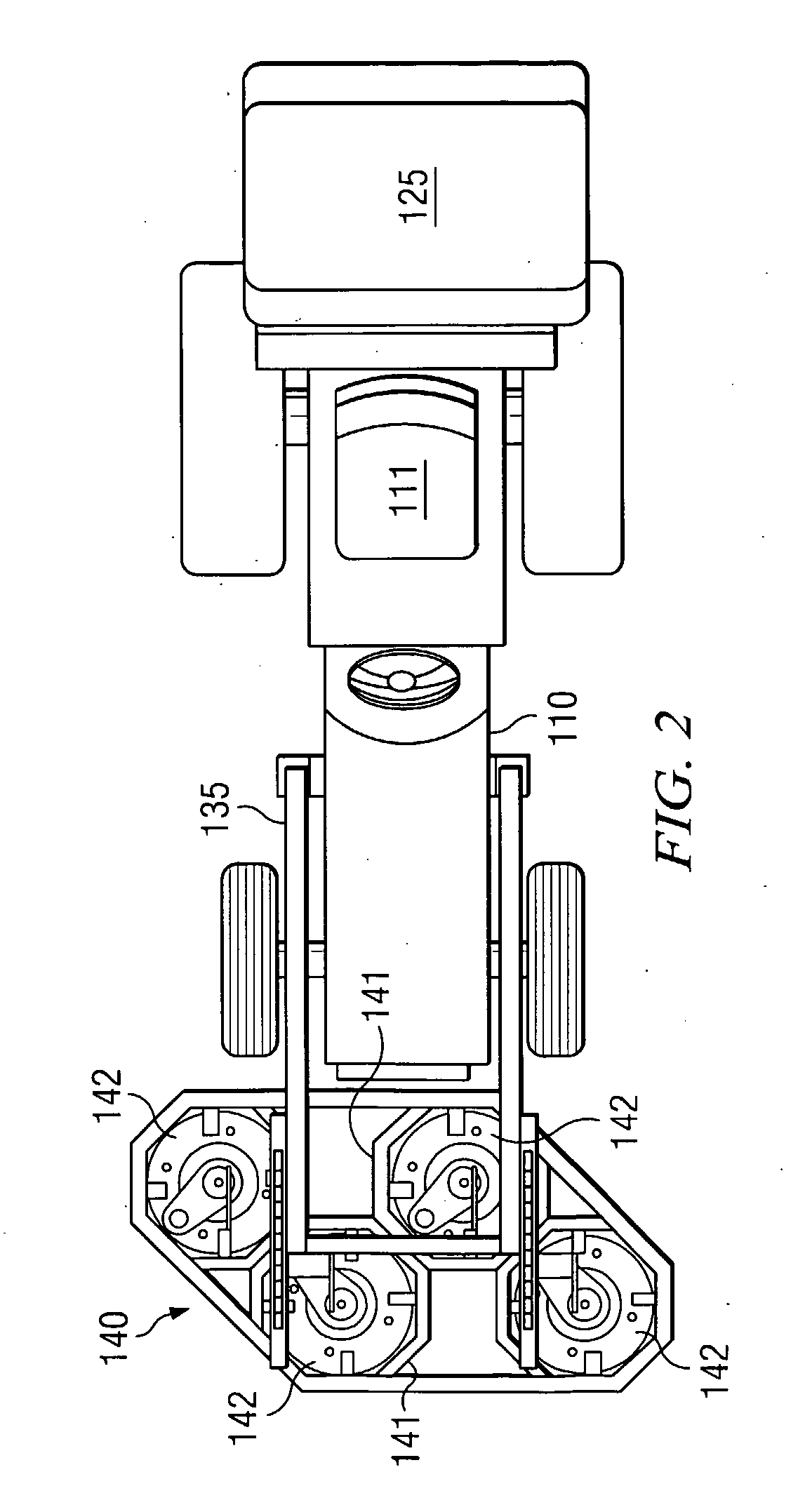Riding Floor Polishing and Grinding Machine for Treating Concrete, Terrazzo, Stone and Similar Surfaces
a technology for polishing machines and floors, applied in grinding machines, grinding/polishing apparatuses, manufacturing tools, etc., can solve the problems of increasing the effectiveness and efficiency of the polishing process, the inability of polishing and grinding machines to fully exploit the potentials of state-of-the-art polishing pads, and the ineffectiveness of machines, etc., to achieve more regulated vertical force, reduce the effect of reducing the number of cuts
- Summary
- Abstract
- Description
- Claims
- Application Information
AI Technical Summary
Benefits of technology
Problems solved by technology
Method used
Image
Examples
Embodiment Construction
[0025]FIG. 1 is a side view showing the major elements of the inventions. The most prominent feature of the invention is the vehicle 10 that provides the essential structure for the invention. Although any basic small agricultural tractor with integrated or attached front loader arms and a power take off (PTO) output shaft can provide an acceptable base-line vehicle, the preferred embodiment utilizes a small or compact vehicle 10, preferably in the size range of 1200 to 2200 pounds, equipped with a 18 to 50 gross horsepower engine delivering at least 15 horsepower to the PTO output shaft. This size vehicle 10 has sufficient weight and power to properly grind and polish floors but is not so large as to be unwieldy and lack sufficient maneuverability for indoor applications, such as polishing the flooring in a warehouse, convention center, church, or even large residential house or multi-family dwelling. It may also be used on many construction jobs on upper floors and is not limited ...
PUM
| Property | Measurement | Unit |
|---|---|---|
| Weight | aaaaa | aaaaa |
| Weight | aaaaa | aaaaa |
| Force | aaaaa | aaaaa |
Abstract
Description
Claims
Application Information
 Login to View More
Login to View More - R&D
- Intellectual Property
- Life Sciences
- Materials
- Tech Scout
- Unparalleled Data Quality
- Higher Quality Content
- 60% Fewer Hallucinations
Browse by: Latest US Patents, China's latest patents, Technical Efficacy Thesaurus, Application Domain, Technology Topic, Popular Technical Reports.
© 2025 PatSnap. All rights reserved.Legal|Privacy policy|Modern Slavery Act Transparency Statement|Sitemap|About US| Contact US: help@patsnap.com



